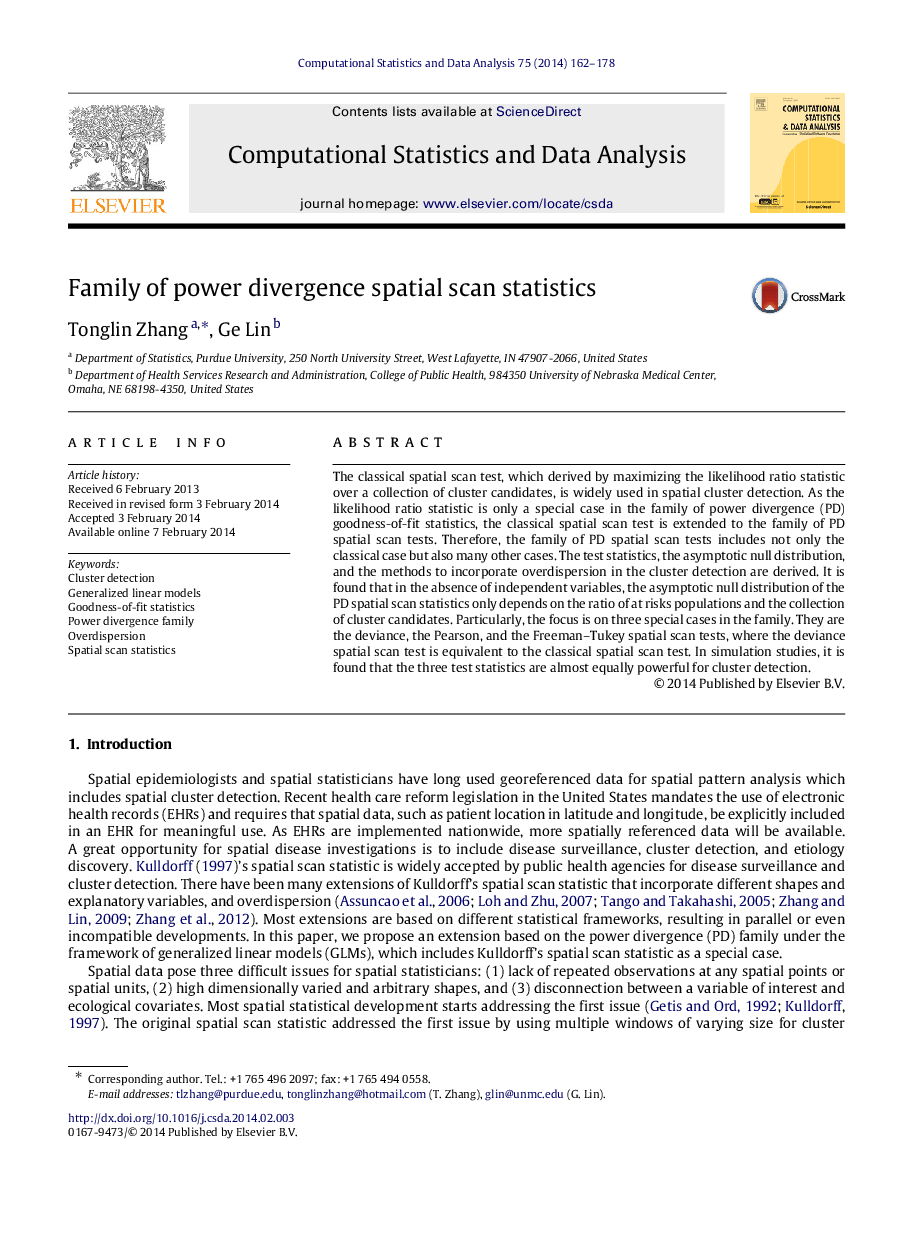| Article ID | Journal | Published Year | Pages | File Type |
|---|---|---|---|---|
| 416371 | Computational Statistics & Data Analysis | 2014 | 17 Pages |
The classical spatial scan test, which derived by maximizing the likelihood ratio statistic over a collection of cluster candidates, is widely used in spatial cluster detection. As the likelihood ratio statistic is only a special case in the family of power divergence (PD) goodness-of-fit statistics, the classical spatial scan test is extended to the family of PD spatial scan tests. Therefore, the family of PD spatial scan tests includes not only the classical case but also many other cases. The test statistics, the asymptotic null distribution, and the methods to incorporate overdispersion in the cluster detection are derived. It is found that in the absence of independent variables, the asymptotic null distribution of the PD spatial scan statistics only depends on the ratio of at risks populations and the collection of cluster candidates. Particularly, the focus is on three special cases in the family. They are the deviance, the Pearson, and the Freeman–Tukey spatial scan tests, where the deviance spatial scan test is equivalent to the classical spatial scan test. In simulation studies, it is found that the three test statistics are almost equally powerful for cluster detection.
